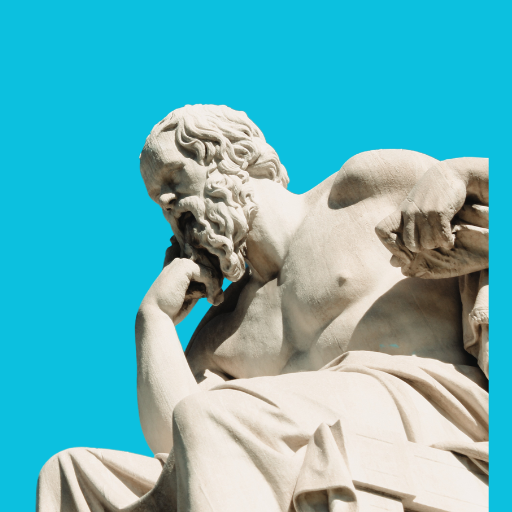Today, there are opposing views about educational practices. There is no general agreement about what students should learn in schools in terms of virtue or prospering life. There is also no agreement on whether educational philosophies should lean towards the intellect or character of the learner. Hence, we have different types of teaching philosophies as a result.

But before we dive into the different types of teaching philosophies, we need to understand what teaching philosophy is. So, let’s begin!
What are Teaching Philosophies?
Teaching is like cooking. The number of possible variations to each recipe for consumption could outnumber the people present to consume it at any given time. In the same way, there are many different ways to teach as long as you take different circumstances and educational philosophies unique to each classroom.
A teacher is a person who imparts knowledge of an assigned topic to a group of students. And in imparting knowledge to students, educational institutions must consider their teaching philosophies and pedagogies to determine how they impact learners and the institutions.
By definition, teaching philosophy is a set of statements that identifies and clarify the beliefs, values, and understanding of a teacher or an educational institution in general. It is a partially organized body of knowledge and opinion of education standards in terms of concepts and practice.
Educational philosophies influence what subjects or topics teachers teach, the way they teach them, and, more importantly, their supporting beliefs and values within and around the core curriculum.
Why Do Educational Philosophies Matter?
A clear educational philosophy identifies and explains different principles and themes that the school’s textbooks or syllabus fail to exemplify. However, these philosophies are consistent with the beliefs and values of the teacher or the institution.
The aim of all the different types of teaching philosophies is to ensure the complete and balanced development of students, equipping them with not only intellect but wisdom to prosper. Education is vocational in the sense that it prepares the youth for all the dimensions of life. So, teachers impart information that gives a defined structure but flexible direction to their learning journey.
Understanding Pedagogy
Pedagogy is a term that describes how teachers cultivate, sustain, nurture, and transform students. It encompasses the vision, professional knowledge, and ideals, as well as the curriculum selection, learning design, classroom organization, and style of teaching and lesson delivery. Pedagogy also defines the methods of assessment the teacher chooses and the overall control and discipline of the classroom.
Major Schools of Thought in Educational Philosophy
Philosophies of education have traveled down a tree of different branches with four major schools of thought: Realism, Existentialism, Pragmatism, and Idealism. At least one philosopher is credited as the founder of the school. For example, Idealism is based on the work by Plato, while Aristotle is the father of Realism. Pragmatism is the work of many 19th century American philosophers.
Lastly, The work of Jean-Paul Sartre led to the Existentialism school of thought. Each school of thought discusses what and how we should teach students and define the different types of teaching philosophies we use today:
1. Idealism
Idealism focuses on the importance of learning different ideas and concepts. Idealists believe in reasoning and question the use of sense perception and the scientific method. They believe that ideas remain constant through time and place, and when it comes to teaching, idealists share universal ideas and works.
According to Idealism, every student should have a teacher or role model who they should look up to, so they can learn the norms of society. Teachers in the classroom with an idealist mindset put a lot of focus on discussion, imitation of important people, and the lecture.
2. Realism
Realism encourages and recommends the use of scientific investigation and sense perception to learn. Realists consider the physical world to be the realm of knowledge, reality, and value and believe that the mind is independent of this. Realists believe that educational institutes should promote rationality using experimentation and observation of science and human behavior.
This means that teachers have a responsibility on their shoulders to have the right information and background and need to believe in the importance of experimental learning. To learn, students must take a hands-on approach.
3. Pragmatism
Pragmatists believe in the idea of change, which allows people to understand what it means to know. Pragmatism, as a philosophy of education, states that knowledge represents an exchange between the learner and the environment. They also believe that truth and values are dependent on the changes that occur in people and their environments.
The most important thing pragmatists teach students is to ask themselves how to question what they know and how to evolve their knowledge to match the changing world. Teachers focus on carefully solving problems considering change by giving students brainstorming activities to encourage collaboration.
4. Existentialism
Existentialism involves focusing on the ideas of existence in which individuals create their meaning and purpose. Existentialists believe in the importance of personal choice, and in educational institutes where existentialism is promoted, teachers try to develop students into free, self-actualizing adults.
In a typical classroom of existentialists, students discuss their lives and the decisions they make while teachers emphasize asking questions and teaching them to define themselves through their way of life.
Types of Teaching Philosophies

We can break down the different types of teaching philosophies into three main categories: student-centered philosophies, teacher-centered philosophies, and society-centered philosophies. It is important to note that all of these philosophies are a combination of two or more schools of thought in educational philosophy, e.g., Idealism and Existentialism.
The following are the main philosophies of education:
1. Perennialism
Perennials are teachers who believe that knowledge passed through the ages should continue to be part of the curriculum, i.e., the classic work Plato, Einstein, or Thomas Edison. Perennials focus their teachings on logic, analytical thinking, and reasoning. To them, only fixed information over the ages is relevant, and they do not consider student input.
The classes that fall under this approach would be physics, chemistry, science, math, religion, and history. Perennialism is a subject-centered philosophy in which the educator teaches students to think rationally. A perennial classroom is organized and well-disciplined, and teachers try to guide the thought process of students towards appreciation of great works such as literature and science discoveries.
In this teaching philosophy, the teacher is the main actor on the stage.
2. Positivism
Teachers who value positivism use documented facts and tangible truths as their anchor points. These teachers don’t believe that religion and the supernatural should be part of the human thinking process. They consider the idea of uncertainty and the unknown as illogical.
Positivism describes an approach to education that uses scientific evidence such as statistics and experiments to reveal a truth about how a society functions. It replaces political and religious ideas with pure science. The classes that fall under this approach could be engineering, computer science, theoretical physics, and biology.
3. Behaviorism
Behaviorists believe in pain and gain through rewards and punishments. This is a control-based approach to teaching in which educators believe that humans react to internal or external stimuli due to their intrinsic nature.
This teacher-centered system gives full control to the educator, who maintains the classroom environment based on student’s behavior. Many people see behaviorism as a form of classroom management to maintain discipline. Teachers use intrinsic and extrinsic rewards whenever students perform a desired behavior. The same concept applies to punishments.
4. Essentialism
Essentialism is a teacher-centered philosophy that aims to teach basic skills. Essentialists believe that there is a universal pool of knowledge up for grabs and the fundamentals of teaching are the basis of the curriculum: science, history, math, and English, etc. This educational philosophy advocates training the mind by focusing on transmitting a series of difficult topics for the promotion of students to the next level.
Essentialism is a common model in American public schools, and a typical day at an essentialist school might have 7 periods of different classes. The teachers impart knowledge by giving lectures while students take notes and solve problems.
The term ends with an assessment of the covered syllabus, and students continue the same daily schedule for a year. Evaluations are predominantly through quizzes, exams, and projects.
5. Progressivism
Progressivism is a student-centered form of teaching philosophy. Here, students follow the scientific method of questioning, and teachers evaluate them by assigning projects and portfolios. However, instead of dictating and controlling the teaching process, progressivists facilitate students with what they need.
A great example of a progressivist is Scott Clarke, the middle school teacher from Stranger Things. Progressivists are active learners and believe that individuality, change, and progress are essential for education. Teachers believe that students learn best from what they consider most relevant in their lives, so they base their curricula on the needs, experiences, interests, and abilities of students.
They promote collaboration using group activities and problem-solving to focus on them, not the content or the teacher.
6. Reconstructionism
Reconstructionism is another student-centered philosophy that strives to instill a desire in students to make the world a better place. Reconstructionists focus on controversial world issues and current events to fuel their thinking process. These educators teach students the value of working together to bring about change by incorporating the curriculum with trending world events.
These teachers are often activists of a movement or cause, such as global warming, war, pollution, world hunger, and deforestation. The idea of Reconstructionism is to address social questions and join the quest to create a better society. Plus, Theodore Brameld founded this philosophy in reaction to the realities of World War II, which serves as a perfect example.
7. Conservatism
Conservatism is the belief the educational institutions should function according to their original purpose. It devalues any concepts that have not been maintained throughout history and should not be restored or be part of the curriculum.
Conservatives believe and value traditional, historical, and generally-accepted practices related to marriage, abortion, human rights, and feminism, etc. For example, they believe in traditional family systems with two parents, marriage between individuals of opposite genders, and freedom of speech.
In terms of education, Conservatives believe in traditional exams and classrooms while opposing the idea of modern education methods such as online learning.
8. Constructivism
Constructivists believe in active participation. A typical classroom contains students who are free to explore their ideas and share concepts in non-traditional ways. It is among the most effective ways of learning today and one of the go-to teaching philosophies teachers are trying to own.
Constructivism recognizes the fact that learners construct knowledge based on their beliefs and experiences rather than passively take in information. Teachers use students’ experiences of the world to help them build their representations and incorporate new information. It’s almost like adding words to the dictionary or writing a poem.
9. Romanticism
Romantics believe in the natural goodness of people is hindered by urbanization. Even though it is an outdated practice, Romanticism was a teaching philosophy between the 17th and 18th centuries. It emphasizes emotional self-awareness to improve society and mental health.
Romantics believed in knowledge through intuition rather than deduction, and this student-centered approach focused on differentiation with no set curricula, formal classes, or tests. In a typical classroom of Romantics, students decided what they wanted to learn, and in many cases, they were expected to learn them on their own.
However, the difference lies in what they were learning as education mostly involved learning survival and labor skills. Even though this educational philosophy faded out over time, you can still find elements of it in modern education, such as psychology, engineering, and design. Today, there are thousands of courses and software students can choose to learn themselves and on their own.
10. Humanism
Also, among the student-centered types of teaching philosophies, Humanism is based on the idea that students should have the choice in the learning process. In this model, students engage themselves in all aspects of learning with the teacher and peers to develop a curriculum and evaluation system specifically for that class.
Unlike most traditional practices, it considers the individual interests and abilities of students to bring out the best of them. More importantly, teachers give students the center-stage allowing them to plan, collaborate, and make decisions together.
11. Nationalism
Nationalists showcase their love for their country and natural spirit and use it to teach students in ways that tie the interests of a nation to the symbols that represent it. While the curriculum remains the same, teachers often impart biased information to students that lean in favor of their country using their perceptions of reality.
For instance, teachers that follow this philosophy, especially in adversary countries, often try to highlight aspects favorable to their country while discussing with students. A great example of this is American Exceptionalism, which implies that the United States is a special country. Exceptionalists believe that they need to teach American students that their country is exceptional.
12. Ethno-Nationalism
Ethno-Nationalism is similar to nationalism, but instead of loyalty lying with one’s country, it lies with one’s ethnic or racial group. An ethnic-nationalist teaching philosophy creates resistance to the cultural and educational imposition by other groups. However, it also uses it positively to preserve the unique characteristics of a particular ethnic group.
For example, many teachers use the ethnic ‘mother tongue’ to teach in class rather than the official national language of the classroom. Another way educational institutions promote ethnonationalism is by including the ethnic group’s literature, history, traditions, food, and sports, etc.
13. Liberalism
Liberal educational philosophy is a system of course of education designed for the cultivation of a free human being. Liberalism aims to empower individuals with not only intellect, broader knowledge, and transferable skills but also a stronger sense of ethics, social responsibility, and values.
With a liberal approach to learning, teachers prepare students to deal with complexity, diversity, and change without compromising essential knowledge of human cultures and the physical world.
14. Marxism
According to Marxists, the school teaches students to passively or reluctantly obey authority, which results in class inequality. They see the education system as working in favor of the ruling class elites. The Marxist approach to teaching is similar to constructivism – it promotes activity, collaboration, and criticism but does not encourage passive absorption of knowledge.
And unlike constructivism, it is student-centered, and Marxists impart information to students that challenge the uneven distribution of power and wealth between social classes. For example, a Marxist educator will encourage students to become entrepreneurs and start businesses rather than graduate, look for a job, and become a part of the system.
Writing Your Teaching Philosophy

Once you know how you want to teach in your classroom, you must write your teaching philosophy. Your teaching philosophy is a self-reflective statement of your beliefs about teaching and learning. And you don’t need to choose just one from the different types of teaching philosophies as every teacher brings their blend to the classroom.
However, you need to convey your core ideas about being an effective teacher to help students achieve their goals. Express your values and beliefs about teaching and use specific examples to illustrate your points. Ask yourself these questions:
- What do you mean by learning?
- What are your values, beliefs, and aspirations as a teacher?
- What does a perfect teaching environment look like to you?
- What assessment methods do you prefer?
- Do you use real-world examples in your teaching?
- What skills should your students obtain as a result of your teaching?
- What methods will you consider to reach these goals?
- What are your attitudes toward advising and mentoring students?
- How do you plan to grow as a teacher?
- How has your teaching philosophy changed over time?
Which Teaching Philosophy is Better?
Just as in many other walks of life, choosing from the best types of teaching philosophies depends on many conditions such as:
- Demographics
- Psychographics
- Location
There are plenty of teaching perspectives and philosophies, and they might not be similar to each other. Teachers, students, and education systems are just as diverse. You will have students from different economic classes, ethnic groups, family backgrounds, and individual personalities.
How do you reach each student?
Knowing who you are as an educator before you enter the classroom will help you answer this question. There’s more to teaching that syllabus and course outlines. The entire experience is a learning curve that will never end.
Conclusion
In addition to the information already provided, it is crucial to emphasize the importance of aligning teaching philosophies with the needs and characteristics of students. Every student possesses unique learning styles, preferences, and abilities, and it is essential for teachers to consider these factors when selecting and implementing a teaching philosophy. By tailoring their approach to meet the individual needs of students, teachers can create a more engaging and effective learning environment.
Flexibility and adaptability are key qualities in successful teaching philosophies. As the educational landscape continues to evolve, and student demographics change, teachers must be open to adjusting their approaches and integrating elements from different philosophies. This flexibility allows teachers to respond effectively to the diverse needs of their students and ensure that the teaching methods employed are relevant and impactful.
It is also important to acknowledge the concept of a personalized teaching philosophy. While there are various types of teaching philosophies, teachers have the opportunity to develop their own unique blend based on their experiences, beliefs, and teaching styles. Reflecting on personal values, teaching goals, and the needs of students can lead to the development of a personalized teaching philosophy that best serves the specific educational context.
Continual professional development and growth are crucial for teachers to enhance their teaching practice. By actively seeking opportunities to learn and explore new ideas, methodologies, and philosophies, teachers can continuously refine their skills and remain responsive to the evolving dynamics of education. Engaging in professional development activities such as workshops, conferences, and collaborative discussions with colleagues allows teachers to stay abreast of current research and best practices, enriching their teaching philosophies and enhancing their overall effectiveness as educators.
While understanding the different types of teaching philosophies is valuable, it is equally important for teachers to align their approach with the unique needs of their students. By embracing flexibility, personalizing their teaching philosophy, and engaging in ongoing professional development, teachers can create a positive and impactful learning experience that supports the growth and development of their students.


